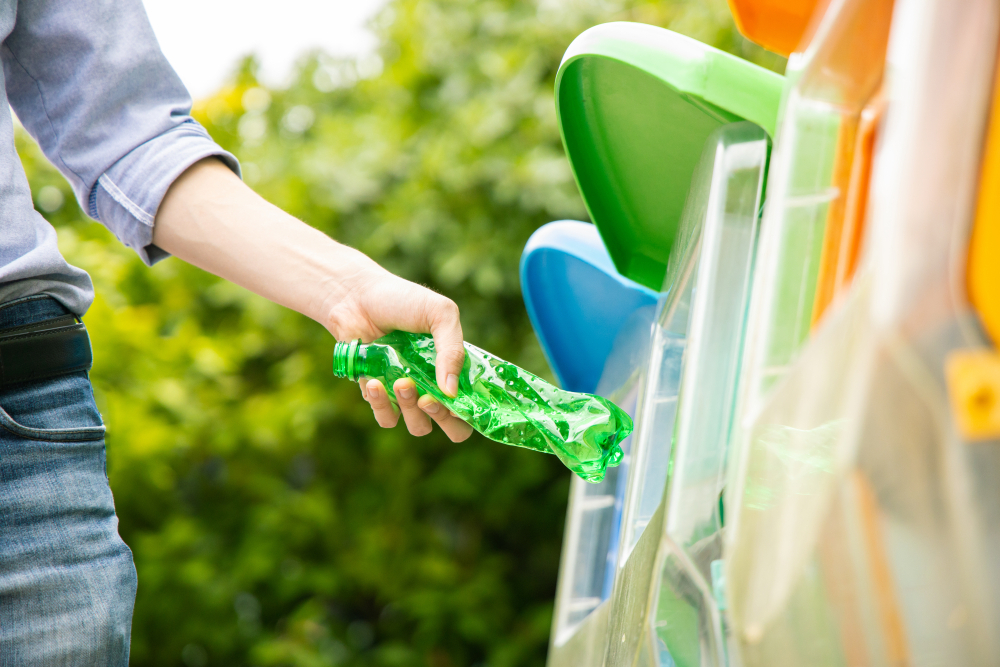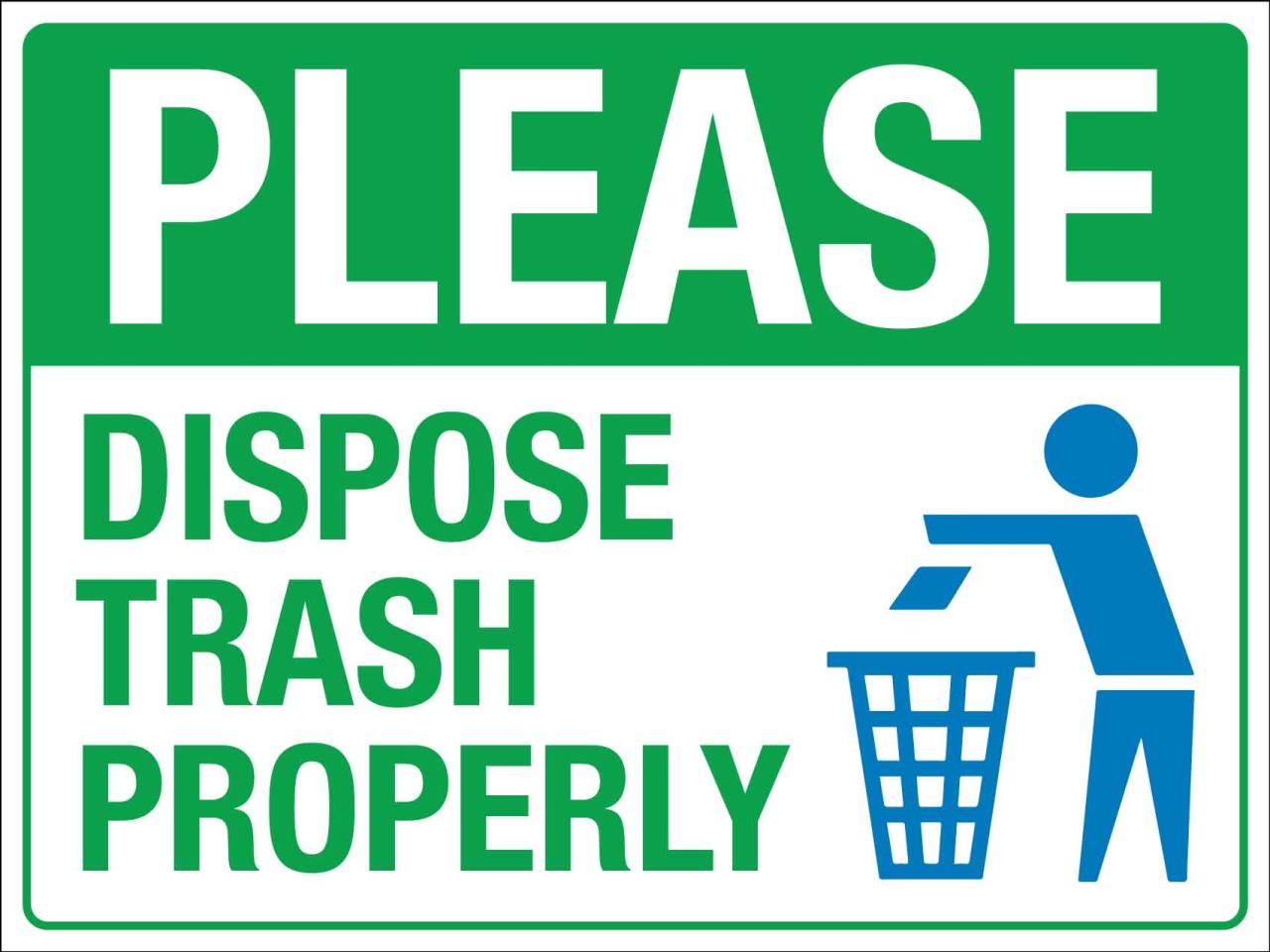Proper Disposal Methods: How To Dispose Of Old Gasoline

Proper disposal of old gasoline is crucial for environmental protection and public safety. Improper handling can lead to soil and water contamination, posing significant risks to ecosystems and human health. Understanding the various methods available and adhering to local regulations is essential for responsible disposal.
Safe Disposal Methods for Old Gasoline
Safe disposal methods prioritize environmental protection and comply with local regulations. Different options are available, ranging from designated recycling centers to hazardous waste collection services. Proper procedures for transferring old gasoline and following disposal protocols are critical to minimize environmental impact.
Options for Disposing of Old Gasoline
Various options are available for disposing of old gasoline. These options vary in cost, safety precautions, and environmental impact. Choosing the most suitable method requires considering local regulations and requirements.
- Recycling Centers: Many communities have designated recycling centers specifically for hazardous materials, including old gasoline. These centers are equipped to handle and safely dispose of gasoline, minimizing environmental risks. Proper identification of the recycling center and adherence to their guidelines is essential. Contact the local authorities to identify authorized locations.
- Hazardous Waste Collection Services: For larger quantities or specific types of contaminated gasoline, specialized hazardous waste collection services are often necessary. These services handle the material according to strict environmental regulations, ensuring safe and proper disposal. These services may have fees associated with them.
- Home Disposal (Unsafe): Never dispose of old gasoline through improper home methods such as pouring it down the drain, onto the ground, or mixing it with other substances. These methods pose severe risks of contaminating the environment and are strictly prohibited. Improper disposal can lead to groundwater contamination, affecting water sources for drinking and agriculture. Improper disposal also endangers local ecosystems.
Correct Procedures for Transferring Old Gasoline
Safe transfer of old gasoline is critical to avoid spills and leaks. The process should adhere to safety precautions to prevent accidental exposure and ensure environmental protection.
- Use appropriate containers: Employ clean, leak-proof containers specifically designed for hazardous materials. Ensure the containers are appropriately labeled with the contents and any associated hazards. Double-check for any leaks or damage to the containers before filling them.
- Careful transfer: Slowly and carefully pour the gasoline into the designated container. Avoid splashing or creating spills. Work in a well-ventilated area, preferably outdoors, to minimize exposure to fumes.
- Secure the container: Seal the container tightly to prevent leaks or spills during transport. Ensure the container is properly labeled and marked with warnings, such as “Hazardous Material” or “Flammable.” Properly seal the container to prevent accidental leakage or spills during transit.
Disposing of Gasoline at a Recycling Center
Recycling centers offer a safe and environmentally friendly option for disposing of old gasoline. Adhering to the specific procedures Artikeld by the recycling center is crucial.
- Identify the recycling center: Contact local authorities or environmental agencies to locate a designated recycling center for hazardous materials, including gasoline.
- Follow instructions: Recycling centers have specific instructions and procedures for handling old gasoline. Carefully follow these instructions to ensure proper disposal and minimize risks.
- Proper documentation: Some recycling centers may require documentation or forms for proper identification and tracking of the material being disposed of.
Risks of Improper Disposal Methods
Improper disposal methods pose significant risks to the environment and human health. These methods can lead to environmental contamination and pose potential hazards.
- Environmental contamination: Improper disposal of gasoline can contaminate soil and water sources, harming plants, animals, and potentially impacting human health.
- Health hazards: Exposure to gasoline fumes can cause respiratory problems, skin irritation, and other health issues. Unintentional exposure to improperly stored gasoline can cause immediate health risks.
- Legal penalties: Improper disposal of hazardous materials is often against local and national regulations, leading to potential legal penalties for individuals and businesses.
Safe Storage Practices

Proper storage of old gasoline is crucial to prevent spills, leaks, and environmental contamination. Improper storage practices can lead to significant hazards, including fire risks and health issues. Adhering to these guidelines ensures the safe and responsible handling of this potentially dangerous substance.
Storing old gasoline safely involves more than just putting it in a container. It necessitates careful consideration of the container type, storage location, and environmental conditions to mitigate potential risks. This includes preventing unauthorized access and maintaining the integrity of the stored fuel.
Best Practices for Storing Old Gasoline
Properly storing old gasoline requires careful attention to detail to prevent accidental spills or leaks. Choosing the right container, securing the storage area, and maintaining appropriate environmental conditions are key components.
Appropriate Containers for Old Gasoline
Using the right containers is vital for preventing spills and leaks. Metal containers, specifically those made of steel or aluminum, are often recommended due to their durability and ability to withstand pressure. These containers should be in good condition, without any cracks or holes. Plastic containers, while sometimes convenient, may not be as durable as metal containers and can be susceptible to degradation over time, potentially compromising the integrity of the stored gasoline. Furthermore, choosing containers that are appropriately sized for the quantity of gasoline being stored is crucial.
Labeling and Identifying Gasoline Containers
Properly labeling containers is essential for safety and accountability. Clearly indicating the contents, date of storage, and any relevant safety information on the container prevents misidentification and ensures that handling procedures are followed. Using labels with bold, large text is recommended to enhance visibility and readability.
Securing Storage Areas
Securing storage areas prevents unauthorized access and potential accidents. Storing gasoline in a designated, locked area is paramount to prevent theft or accidental exposure. The storage area should be located away from sources of ignition, such as open flames or electrical equipment. Furthermore, the area should be level to avoid spills and leaks from occurring.
Ideal Storage Temperature and Humidity
Maintaining optimal storage conditions ensures gasoline quality and prevents degradation. Storing gasoline in a cool, dry environment is essential. Extreme temperatures can cause gasoline to evaporate more quickly or become more viscous. Exposure to excessive moisture or humidity can also lead to issues with the gasoline’s integrity and potentially lead to contamination. A controlled temperature range between 10°C and 25°C (50°F and 77°F) and a low humidity level is generally recommended.
Proper Ventilation in Storage Areas
Adequate ventilation in storage areas prevents the buildup of gasoline vapors. This is crucial to mitigate fire hazards and maintain air quality. Storage areas should be well-ventilated to avoid accumulating flammable vapors. Openings or exhaust systems can help remove any potential vapors, ensuring a safe environment.
Appropriate and Inappropriate Containers
| Appropriate Containers | Inappropriate Containers |
|---|---|
| Steel drums | Glass bottles |
| Metal cans | Plastic bags |
| Plastic containers with tight-fitting lids | Damaged or dented containers |
| Approved fuel containers | Open containers |
Using suitable containers and ensuring they are in good condition is vital. Inappropriate containers can lead to leaks, spills, and potential safety hazards.
Understanding Local Regulations

Knowing the specific regulations for hazardous waste disposal, like old gasoline, in your area is crucial. Compliance ensures environmental protection and avoids potential penalties. Failure to follow local guidelines can result in significant fines and legal repercussions.
Local Authorities Responsible for Hazardous Waste Disposal, How to dispose of old gasoline
Understanding the entities responsible for handling hazardous waste is essential. These authorities enforce regulations and oversee the proper disposal procedures. This knowledge helps you identify the correct channels for reporting and handling old gasoline disposal.
- Environmental Protection Agency (EPA): The EPA often sets national standards, but local and state agencies handle enforcement and specific regulations.
- State Environmental Agencies: These agencies often have specific programs and regulations for hazardous waste, including gasoline disposal.
- Local Municipalities: Local governments may have ordinances and programs related to hazardous waste management, including gasoline.
- Waste Management Companies: Licensed waste management companies may handle the collection and disposal of hazardous waste under the supervision of the above authorities.
Local Regulations and Guidelines for Gasoline Disposal
Local regulations dictate how old gasoline must be disposed of. These vary by region and state. Understanding these specifics is paramount to legal compliance and environmental responsibility.
- Specific requirements for containers and labeling.
- Designated collection points or disposal facilities.
- Restrictions on mixing gasoline with other substances.
- Requirements for proper documentation, such as disposal manifests.
Penalties for Improper Disposal of Hazardous Materials
Improper hazardous waste disposal can lead to severe consequences. Understanding these penalties helps ensure compliance.
- Fines: Penalties can range from a few hundred to several thousand dollars depending on the severity of the violation and local regulations.
- Legal Action: Improper disposal can lead to legal action, including lawsuits and potential criminal charges.
- Environmental Remediation Costs: If improper disposal contaminates the environment, the responsible party may be required to pay for environmental cleanup.
Specific Disposal Procedures as per Local Regulations
Local regulations dictate the precise procedures for disposing of old gasoline. Contacting the appropriate local authorities is essential to understand the specific requirements in your area.
- Confirming the appropriate disposal method, which could include specialized collection services or designated facilities.
- Following the correct labeling procedures to ensure proper identification and handling of the waste.
- Adhering to guidelines regarding the quantity of gasoline to be disposed of.
- Understanding and adhering to procedures for proper containerization, ensuring the safety and stability of the container during transportation.
Comparison and Contrast of Regulations in Different Regions
Gasoline disposal regulations differ among regions and states. This variation stems from differing environmental priorities and infrastructure capabilities.
| Region | Regulations | Contact Information |
|---|---|---|
| Example Region 1 (State A) | Requires gasoline to be collected by licensed hazardous waste haulers to designated facilities. Strict limits on the volume of gasoline accepted at a time. | State Environmental Agency, Contact # (XXX)XXX-XXXX |
| Example Region 2 (State B) | Allows for self-disposal of small amounts of gasoline at designated collection points, provided the proper containers and documentation are used. More lenient guidelines for mixing with certain other substances. | Local Waste Management Department, Contact # (XXX)XXX-XXXX |
Avoiding Common Mistakes

Improper disposal of old gasoline can lead to serious environmental and health risks. Understanding the common pitfalls and the potential consequences is crucial for responsible handling. Careless actions can contaminate soil and water sources, harming ecosystems and potentially impacting human health. Following proper guidelines for gasoline disposal is essential for safeguarding our environment and well-being.
Common Mistakes in Gasoline Disposal
Misunderstanding the proper procedures for gasoline disposal is a frequent error. Improper storage of old gasoline, inadequate handling during disposal, and ignorance of local regulations often lead to mistakes. Failing to recognize the potential hazards associated with improper disposal can result in significant consequences.
Consequences of Improper Gasoline Disposal
The consequences of improperly disposing of gasoline can be severe and far-reaching. Accidental spills or leaks can contaminate groundwater, impacting drinking water supplies and harming aquatic life. Improperly managed waste can lead to the release of harmful fumes, posing health risks to those exposed. The environmental impact can be substantial, affecting ecosystems and biodiversity. Land pollution from improper disposal can also lead to long-term ecological damage.
Importance of Following Guidelines for Safe Disposal
Adherence to proper disposal guidelines is vital to prevent environmental contamination and ensure public safety. These guidelines are established to mitigate risks and protect both the environment and human health. Following these guidelines is not just a responsible practice but a necessary step to safeguard our surroundings.
Avoiding Contamination of Water Sources
To prevent contamination of water sources, careful consideration of disposal methods is paramount. Using appropriate containers, avoiding spills, and adhering to local regulations for disposal are critical steps. Selecting a designated disposal site, ensuring proper containment during transport, and adhering to safety precautions minimize the risk of water contamination.
Comparison of Different Disposal Options
Several methods exist for disposing of old gasoline, each with its own advantages and disadvantages. A comparison of these options can help in choosing the most suitable method.
| Disposal Method | Advantages | Disadvantages |
|---|---|---|
| Recycling Programs | Reduces waste, conserves resources, potentially environmentally friendly | May not be readily available in all areas, may require specific types of gasoline |
| Designated Collection Centers | Ensures proper handling and disposal by trained professionals, often environmentally sound | May be geographically distant, require transportation |
| Safe Disposal at a Service Station | Convenient for individuals, often environmentally sound | May have limited capacity, possible delays or costs |
| Pouring Gasoline into the Drain | Quick, seemingly convenient | Significant environmental risk, illegal in most places, contaminates water systems |
Potential Hazards Associated with Improper Gasoline Disposal
Improper gasoline disposal poses a multitude of hazards. Release of harmful vapors can cause respiratory problems. Contamination of soil and water can endanger wildlife and human health. Accidental fires can result from improper handling or storage. Ignoring local regulations can lead to legal penalties.
Improper disposal of gasoline can have severe environmental consequences, potentially impacting entire ecosystems and jeopardizing public health.
Alternative Uses (if applicable)

While direct reuse of old gasoline is generally discouraged due to environmental concerns and safety hazards, certain specific applications might offer a viable alternative to disposal. These applications, however, require meticulous adherence to safety protocols and rigorous environmental considerations.
Repurposing old gasoline necessitates a cautious approach. The primary concern is safety, as even seemingly minor uses can present substantial risks if proper precautions aren’t followed. Furthermore, the environmental impact of any repurposing needs careful evaluation.
Potential Alternative Uses
Certain uses of old gasoline, though not typical, may be possible. However, these should only be considered after exploring and exhausting all responsible disposal methods and understanding the implications of potential risks. The following are some examples.
- Fuel for specific equipment: Some specialized equipment, such as certain small engines or generators, might accept gasoline blends with additives. However, this requires thorough research and validation that the blend will not damage the equipment. Consult the manufacturer’s recommendations and ensure the gasoline meets their specifications to avoid potential damage or malfunction.
- Solvent for specific applications: Gasoline can be a solvent in certain industrial or cleaning contexts. However, this is highly specialized and necessitates extensive safety protocols, proper ventilation, and protective gear. Moreover, the specific use and concentration should be rigorously assessed to minimize health and environmental risks. This is highly discouraged in residential settings due to the potential hazards.
- Raw material in specialized chemical processes: In certain industrial contexts, gasoline components can be extracted and used as raw materials for specific chemical processes. However, this requires highly controlled industrial settings, specialized equipment, and adherence to strict safety and environmental regulations. This is a complex procedure, and not something individuals should attempt.
Safety Precautions and Considerations
Implementing any alternative use requires meticulous safety precautions. The primary concern is the potential for fire and explosion, as well as exposure to hazardous fumes and chemicals. This includes adequate ventilation, proper protective gear (gloves, goggles, respirators), and a well-ventilated working area.
| Safety Measure | Description |
|---|---|
| Ventilation | Ensure adequate ventilation to prevent the buildup of harmful fumes. Open windows and use fans where possible. |
| Protective Gear | Use appropriate personal protective equipment (PPE), including gloves, goggles, and respirators. |
| Working Area | Work in a well-ventilated, designated area away from open flames, sparks, or ignition sources. |
Environmental Impact
Repurposing old gasoline, even with careful adherence to safety precautions, can still have environmental implications. Improper handling or disposal of byproducts can lead to pollution of soil and water sources. Additionally, the release of fumes can contribute to air pollution. Therefore, thorough consideration of the environmental consequences is essential before attempting any repurposing.
Viability of Alternative Uses
The viability of alternative uses depends significantly on local regulations and the availability of appropriate equipment and resources. Some jurisdictions might prohibit the repurposing of old gasoline entirely. Additionally, the cost-effectiveness of alternative uses should be carefully evaluated.
Q&A
How to dispose of old gasoline – What are the penalties for improper disposal of hazardous materials?
Penalties for improper disposal of hazardous materials can vary significantly depending on the specific regulations in your region. They may range from fines to legal consequences. Always consult your local authorities for precise details.
Can I dispose of old gasoline at a regular trash facility?
No, gasoline is a hazardous material and should not be disposed of in regular trash. It must be handled through designated recycling centers or hazardous waste collection services.
What types of containers are suitable for storing old gasoline?
Use only approved, durable, and leak-proof containers specifically designed for storing hazardous materials. Always check the container’s specifications and ensure it meets the necessary requirements for gasoline storage.